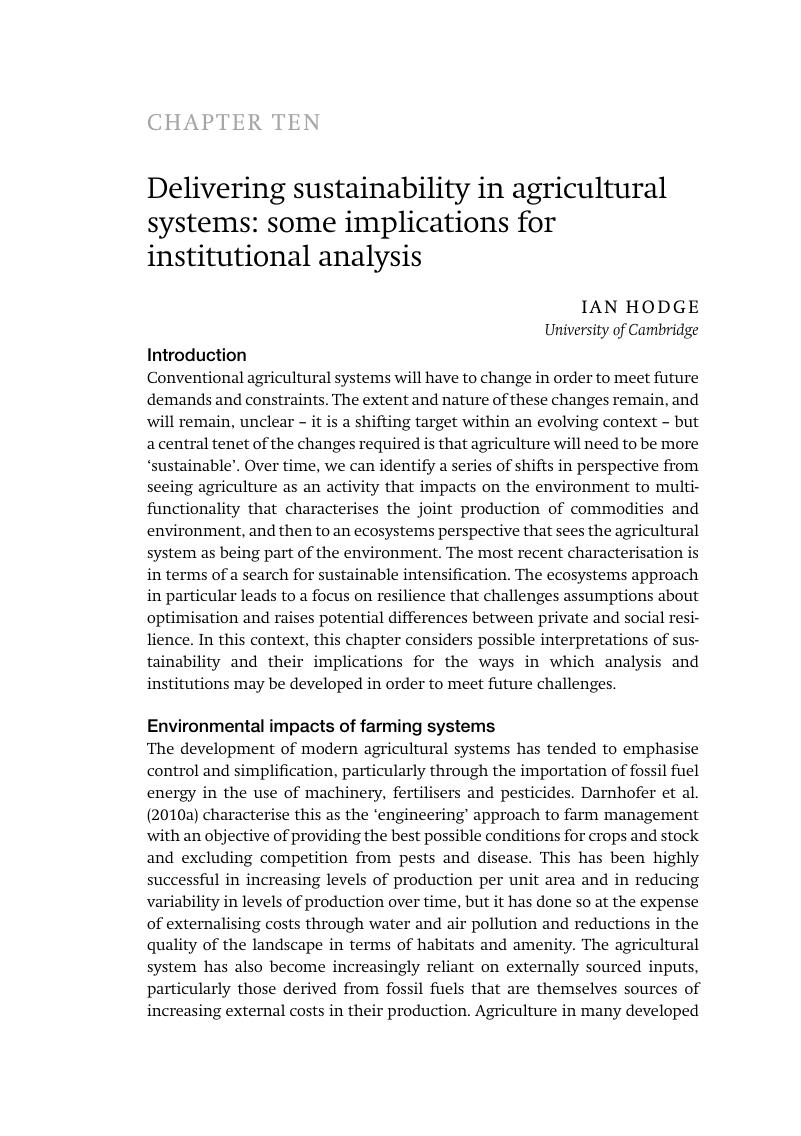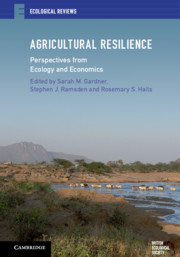Book contents
- Agricultural Resilience
- Ecological Reviews
- Agricultural Resilience
- Copyright page
- Contents
- Contributors
- Preface and acknowledgements
- Chapter One Introducing resilience
- Part I Biodiversity, ecosystem services and resilience in agricultural systems
- Part II Integrating biodiversity and building resilience into agricultural systems
- Chapter Ten Delivering sustainability in agricultural systems: some implications for institutional analysis
- Chapter Eleven The resilience of Australian agricultural landscapes characterised by land-sparing versus land-sharing
- Chapter Twelve Ecological–economic modelling for designing cost-effective incentives to conserve farmland biodiversity
- Chapter Thirteen Viability analysis as an approach for assessing the resilience of agroecosystems
- Chapter Fourteen Integrating economics and Resilience Thinking: the context of natural resource management in Australia
- Chapter Fifteen Integrating biodiversity and ecosystem services into European agricultural policy: a challenge for the Common Agricultural Policy
- Chapter Sixteen Using environmental metrics to promote sustainability and resilience in agriculture
- Chapter Seventeen Conclusions on agricultural resilience
- Index
- Plate Section (PDF Only)
- References
Chapter Ten - Delivering sustainability in agricultural systems: some implications for institutional analysis
from Part II - Integrating biodiversity and building resilience into agricultural systems
Published online by Cambridge University Press: 12 April 2019
- Agricultural Resilience
- Ecological Reviews
- Agricultural Resilience
- Copyright page
- Contents
- Contributors
- Preface and acknowledgements
- Chapter One Introducing resilience
- Part I Biodiversity, ecosystem services and resilience in agricultural systems
- Part II Integrating biodiversity and building resilience into agricultural systems
- Chapter Ten Delivering sustainability in agricultural systems: some implications for institutional analysis
- Chapter Eleven The resilience of Australian agricultural landscapes characterised by land-sparing versus land-sharing
- Chapter Twelve Ecological–economic modelling for designing cost-effective incentives to conserve farmland biodiversity
- Chapter Thirteen Viability analysis as an approach for assessing the resilience of agroecosystems
- Chapter Fourteen Integrating economics and Resilience Thinking: the context of natural resource management in Australia
- Chapter Fifteen Integrating biodiversity and ecosystem services into European agricultural policy: a challenge for the Common Agricultural Policy
- Chapter Sixteen Using environmental metrics to promote sustainability and resilience in agriculture
- Chapter Seventeen Conclusions on agricultural resilience
- Index
- Plate Section (PDF Only)
- References
Summary

- Type
- Chapter
- Information
- Agricultural ResiliencePerspectives from Ecology and Economics, pp. 211 - 231Publisher: Cambridge University PressPrint publication year: 2019



